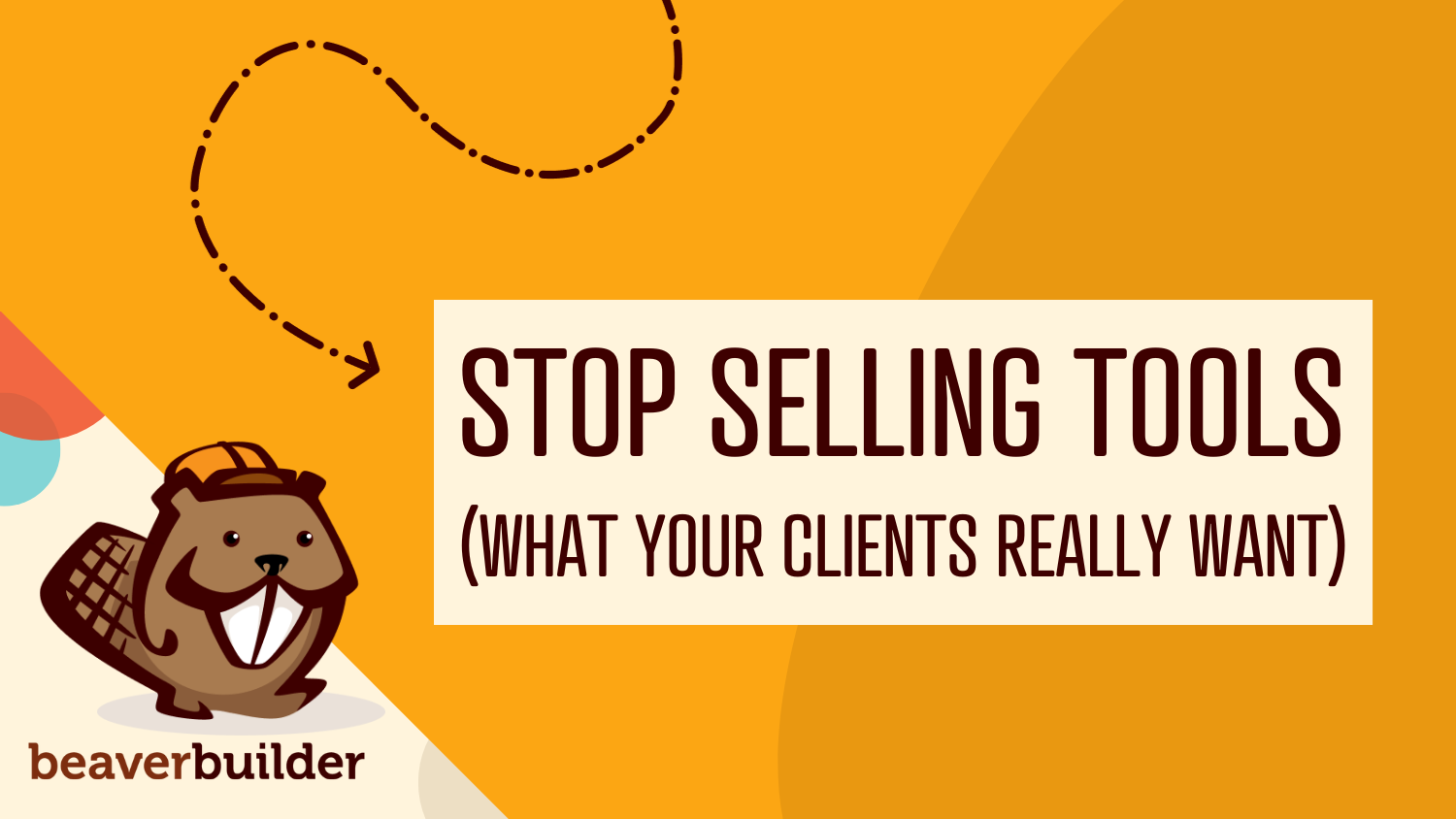
How to Sell Websites to Clients (Without Talking About Tools)
Struggling with how to sell websites to clients without getting lost in tech talk? Learn how to communicate the real business impact of your work so clients see their website as a smart investment, not just another expense.
The One Question That Changed Everything
My friend Sarah walked into her biggest pitch of the year with a polished presentation about responsive design, custom WordPress development, and advanced SEO optimization. After twenty minutes of explaining her technical approach, the prospect asked one simple question:
“That sounds great, but how will this help me sell more products?”
Ouch. Sarah realized she’d focused entirely on tools and techniques while ignoring the client’s core concern: growing their business. She lost the project to a competitor who quoted a higher price but clearly connected their services to increased revenue.
That painful lesson transformed Sarah’s approach. Today, she leads with business outcomes, not technical features. The result? Clients now view her as a strategic partner rather than just another web developer.
Why Most Web Professionals Lose Winnable Deals
Often, the difference between agencies that struggle and those that consistently win isn’t technical skill, it’s positioning. While you’re explaining frameworks and features, your competition is promising more leads, higher conversions, and measurable ROI.
Most clients don’t care about your tech stack. They care about solving problems, increasing revenue, and growing their business. When you shift the conversation from technology to outcomes, you transform from a service provider into a strategic partner who commands premium pricing.
If you want to win more projects, raise your rates, and stand out in a saturated market, you need to sell websites based on value, not tools.
Stop Selling Tools (Here’s What Your Clients Really Want)
Think about the last major purchase you made. You probably didn’t buy a car because of how it was engineered; you bought it because it will reliably get you where you need to go. Your clients feel the same way about websites. They’re investing in solutions to business problems, not software features.
Yet too many web professionals lead with tools and tech:
- “We build fast-loading sites with Beaver Builder.”
- “This site will run on WordPress with top-tier plugins.”
- “We follow the latest SEO and performance practices.”
While these statements may impress other developers, they don’t address what matters to clients who care about what the website will do for their business.
The magic happens when you flip the script. Instead of starting with what you build, start with what your client wants to achieve.
The Psychology of Value-Based Selling
Value-based selling works because it aligns with how people actually make purchasing decisions. Clients buy when they believe the return on investment exceeds the cost. Your job is to make that return crystal clear.
When you position a website as a business investment rather than an expense, everything changes. Instead of competing on price, you compete on results. Instead of justifying costs, you’re projecting profits. This approach attracts better clients who understand the value of professional web services and they’re willing to pay for that.
How to Sell Websites to Clients: 9 Actionable Steps That Work
Landing new web design clients requires more than just technical skills. It demands a strategic approach to sales that builds trust, demonstrates value, and guides prospects through a clear decision-making process.

Here are 9 actionable steps you can start using today to transform how you sell websites to clients and win more projects:
1. Understand Your Client’s Goals
Before presenting any solution, you must first understand what drives your client’s decision-making. Every business owner has specific goals, challenges, and pain points that a website can address.
Start every client conversation with discovery questions such as:
- What challenges are you facing with your current website?
- How do you currently measure online success?
- What actions do you want visitors to take?
- What’s keeping you up at night about your online presence?
The most successful agencies spend more time listening than talking in initial meetings. They ask follow-up questions to uncover deeper motivations. They understand that every client is unique, even within the same industry.
Take action: Prepare 3-5 open-ended questions to ask your next client that focus on their business goals and challenges. Encourage deeper conversation by asking follow-up prompts like “What else?” to help your client fully explore each topic.
Want a head start? Download our FREE Website Discovery Worksheet to guide your discovery calls, uncover essential client information, and set every project up for success:
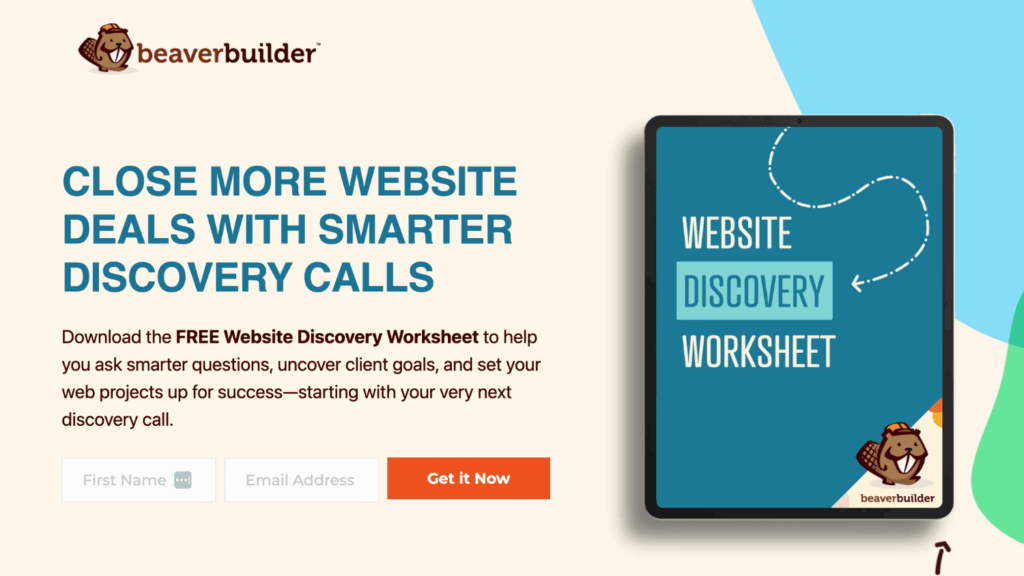
2. Focus on Business Outcomes
Every technical feature of the website project should connect to a specific business outcome. This translation is where some web professionals struggle. They assume clients understand the connection between technical capabilities and business results.
Here’s how to reframe your technical expertise:
- Instead of: “We build mobile-responsive sites”
Say: “We make sure your website works on cell phones, so you don’t lose the 60% of visitors who browse on mobile” - Instead of: “We implement SEO best practices”
Say: “We help your website show up at the top of Google when potential customers search for your services” - Instead of: “We optimize your page loading speeds”
Say: “We make your website load fast because every second of delay costs you 7% of potential sales”
This is where choosing the best website builder becomes crucial, not for the client presentation, but for your ability to deliver on these promises efficiently and reliably.
Take action: Choose one technical feature you frequently mention (like SEO or mobile responsiveness) and write down 2–3 clear client benefits it provides, such as increased leads or better user experience.
3. Speak Your Client’s Language
Most clients aren’t fluent in technical jargon and they don’t need to be. What they care about is how your work will solve their problems, help them grow, or make their life easier. That’s why it’s essential to translate your services into clear, results-oriented language.
Instead of saying, “We use a drag-and-drop page builder with modular layouts,” you could say, “Your site will be easy to update, so you won’t need to hire a developer for small changes.”
When you use language your clients understand, you build trust, reduce confusion, and position yourself as someone who understands their business, not just the tech. This approach also makes your proposals more persuasive because you’re showing real outcomes, not just listing features.
Take action: Review your website or sales pitch and highlight any tech jargon. Rewrite those phrases using simple business language that emphasizes value and results. If you’ve already gathered insights from your client such as through a discovery worksheet or call, use their own words to address their specific challenges and explain how your services will help solve them.
4. Demonstrate ROI Using Case Studies
Nothing builds credibility like proven results. Case studies provide social proof that your approach works in real-world situations. They help prospects visualize themselves achieving similar outcomes:
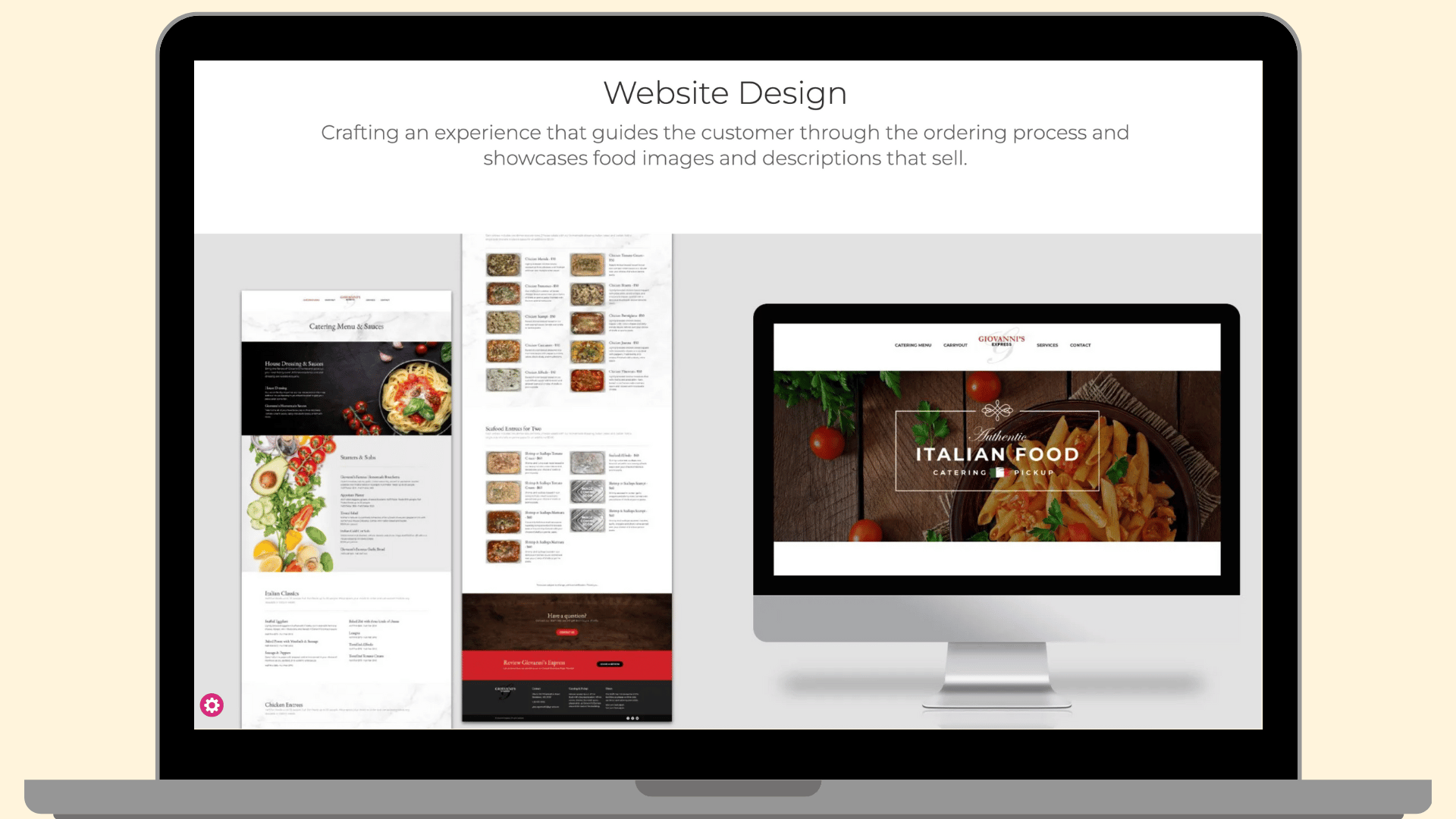
Structure your case studies around business challenges and measurable results:
- The Challenge: Start with the client’s initial situation and specific problems
- The Strategy: Explain your approach and how you addressed their unique needs
- The Results: Quantify the outcomes with metrics that matter to business owners
Include metrics like increased lead generation, higher conversion rates, improved search rankings, and reduced bounce rates. When possible, translate these improvements into revenue impact.
For example: “After redesigning their site with a focus on conversion optimization, ABC Company saw a 40% increase in contact form submissions and a 25% boost in online sales within three months.”
Take action: Identify one recent project with measurable results. Draft a short case study highlighting the client’s problem, your solution, and the business outcomes achieved.
5. Offer a Clear Pricing Structure
Unclear pricing creates hesitation. Your service packages could reflect different levels of business impact rather than technical specifications.
For example, Some Web Studio offers Small, Medium, and Large Business Website Packages:
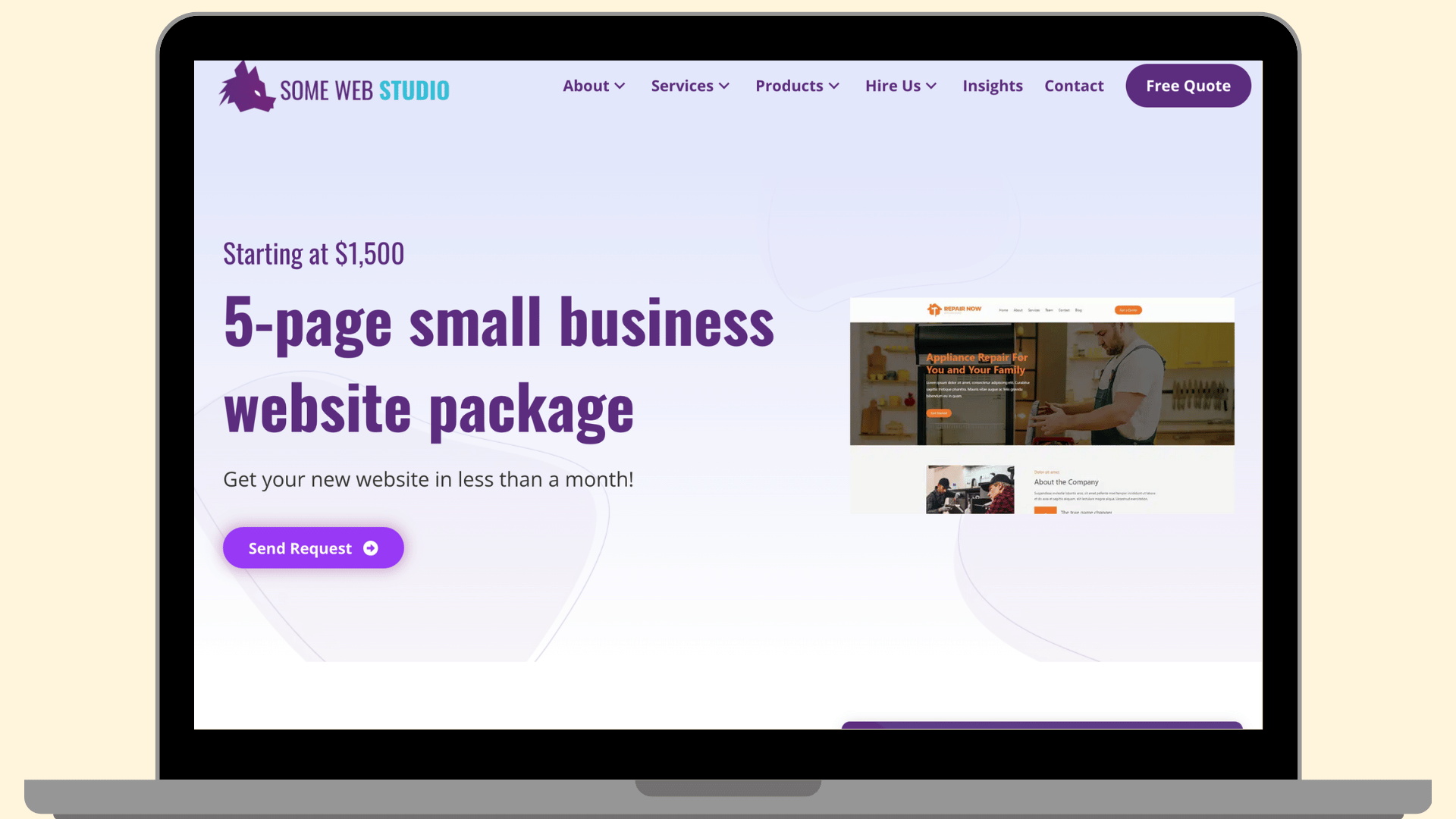
Instead of basic, standard, and premium tiers based on features, consider creating packages that address different business objectives such as:
- Foundation Plan: Build a Credible Online Presence
Perfect for startups or small businesses. This plan includes a professionally designed, mobile-friendly website built to convert visitors into leads and establish your brand online. - Growth Plan: Turn Traffic Into Revenue
Ideal for growing businesses. This plan focuses on lead generation and conversion optimization, with integrated tools like contact forms, SEO enhancements, and analytics to drive measurable results. - Authority Plan: Scale With Confidence and Automate Growth
Designed for established companies ready to lead their market. This plan delivers a high-performance website with advanced features like marketing automation, CRM integration, and custom functionality to reinforce your authority and fuel ongoing growth.
This approach helps clients clearly understand the value of each package and why it’s worth the investment. You can also present them as phases (Phase 1, Phase 2, Phase 3) to frame your services as part of an ongoing, long-term partnership rather than a one-time project.
Take action: Sketch out 2-3 pricing packages focused on client goals instead of just listing technical features.
6. Handle Price Objections Like a Pro
Price objections often arise when clients don’t understand the value proposition. When someone says your services cost too much, they’re really saying they don’t see enough value to justify the investment.
Instead of immediately lowering your price, revisit the value conversation:
- What specific outcomes do they need to achieve?
- How would they measure project success?
- What’s the potential return on investment?
- What’s the cost of maintaining their current situation?
Sometimes clients need help understanding the cost of inaction:
- What opportunities are they missing with their current website?
- How much revenue could they gain by addressing conversion problems?
- What’s the competitive risk of maintaining an outdated online presence?
By guiding the conversation back to outcomes and ROI, you can reframe pricing concerns as opportunities and help clients see your services as a strategic investment rather than a cost.
Take action: Write a script or bullet points for your next sales call that gently shifts price concerns toward ROI questions.
7. Provide a Roadmap for Success
Help clients visualize what it’s like to work with you by outlining a clear, step-by-step process:
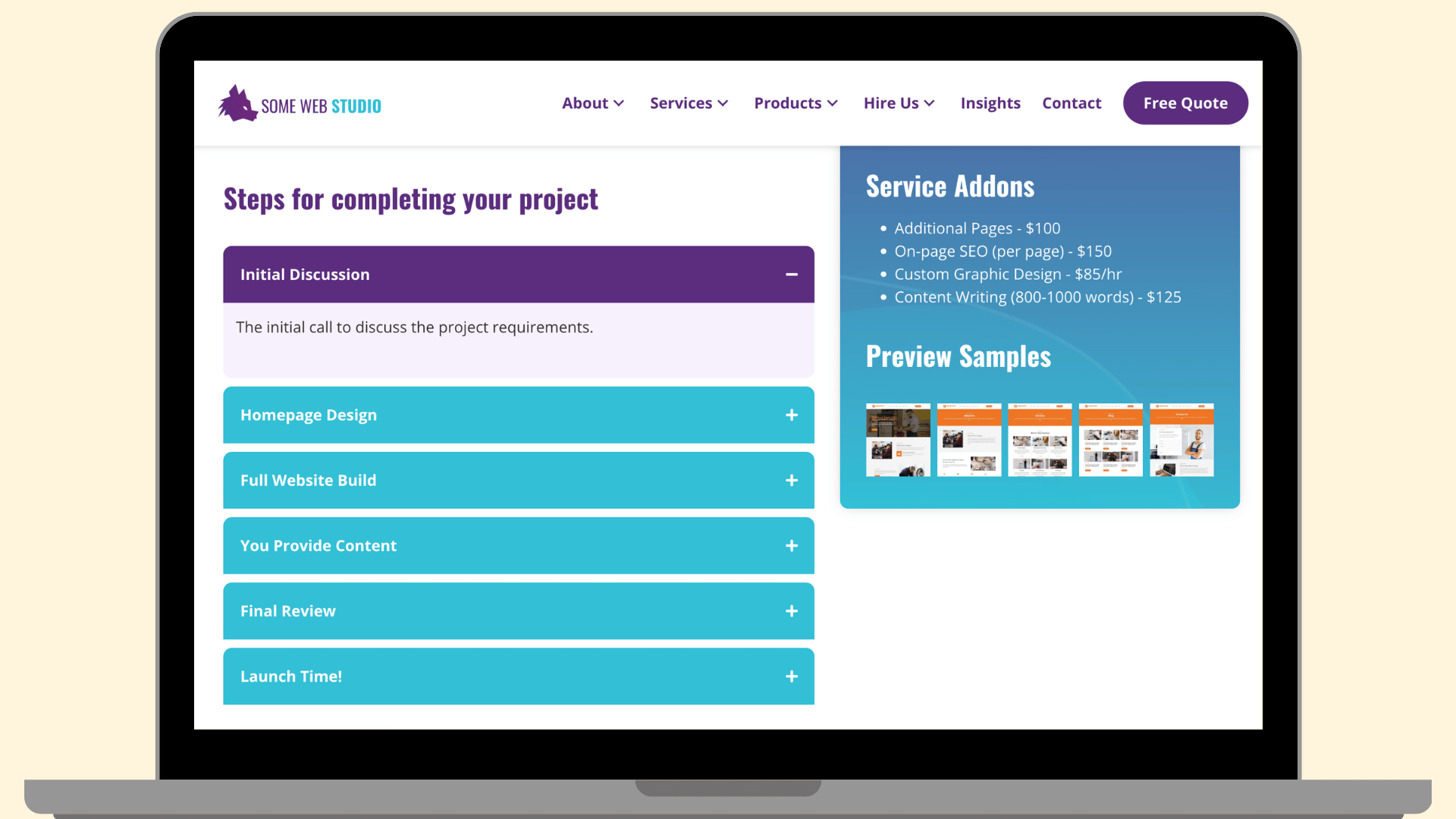
While your exact workflow may vary, a simple and effective structure could look like this:
- Discovery Call: Understand client’s needs, goals, and challenges
- Strategy & Design: Create a tailored mockup aligned with their business objectives
- Development & Launch: Build, test, and optimize the site for performance and conversions
- Ongoing Support: Provide updates, maintenance, and strategic guidance to keep things running smoothly
When clients understand what to expect, it builds trust, reduces uncertainty, and positions you as a professional who has a proven system for delivering results.
Your framework reassures clients that they’re not just purchasing a website. They’re investing in a guided, results-driven experience that supports their business long after launch.
Take action: Create a simple visual or checklist outlining your process steps from discovery through ongoing support that you can share with clients to set expectations.
8. Build Long-Term Partnerships
Value-focused selling creates stronger client relationships that extend beyond single projects. When clients see measurable results from your work, they’re more likely to trust you with future needs and recommend you to others.
Position yourself as a long-term growth partner rather than a one-time service provider. Offer services like maintenance plans, performance monitoring, SEO audits, or ongoing strategic consulting to help clients get continued value from their website investment. This not only increases your revenue but also deepens client trust and loyalty.
Take action: Brainstorm 1–2 additional post-launch services you can offer to support clients after their site goes live. Even simple offerings like monthly check-ins or content updates can encourage ongoing collaboration and open the door to future projects.
9. Use Tools That Deliver Results
While clients don’t care about your tools, your tech choices directly impact your ability to deliver the results they do care about. For example, the right page builder can be the difference between a profitable project and a costly headache:
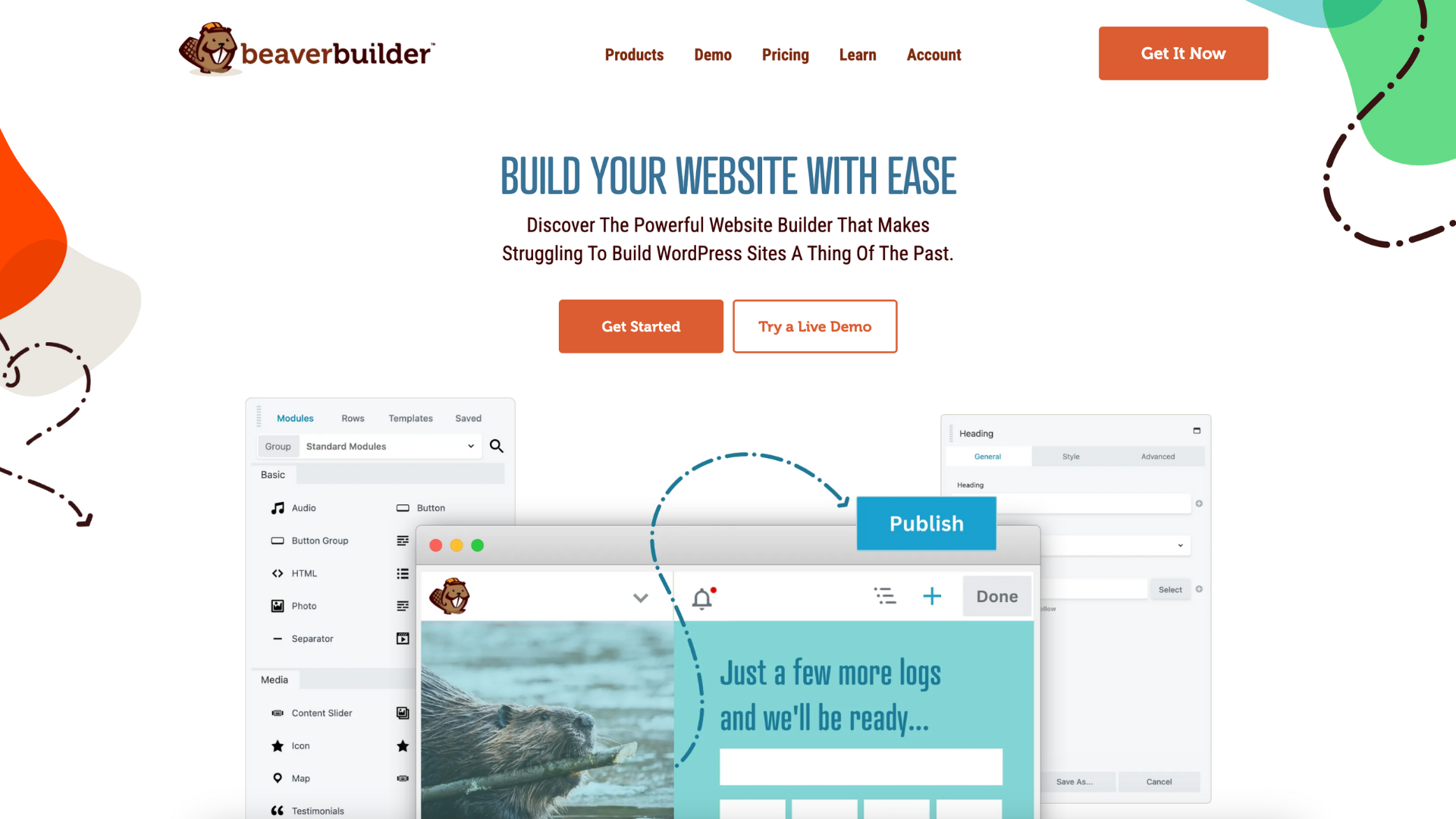
With Beaver Builder, you can deliver professional results quickly without sacrificing quality. The visual editor lets you build sophisticated layouts efficiently, while the clean code output ensures fast loading times and strong SEO performance. Most importantly, you can hand over a site that clients can safely update without breaking your carefully crafted design.
This combination of speed, flexibility, and scalability makes it ideal for value-based selling. You can deliver fast, high-performing websites that not only meet immediate goals but also scale with your client’s growth.
Take action: If you’re not already using a website builder like Beaver Builder, try the demo today to explore how it can speed up your workflow and empower clients.
Final Thoughts
Selling websites isn’t about showing off tools or listing features, it’s about solving real business problems. When you lead with outcomes, demonstrate results, and make your process easy to follow, you don’t just sell websites; you build trust, close more deals, and grow alongside your clients.
To recap, here are 9 actionable steps to help you sell websites by focusing on value instead of features:
- Understand Your Client’s Goals – Ask smart questions to uncover what success looks like.
- Focus on Business Outcomes – Translate features into benefits that matter to your client.
- Speak Their Language – Avoid technical jargon; communicate results in business terms.
- Use Case Studies – Share proof of how your work delivers measurable impact.
- Offer a Clear Pricing Structure – Frame your packages around business value, not tech specs.
- Handle Price Objections – Revisit ROI and the cost of doing nothing.
- Provide a Roadmap – Outline your process so clients know what to expect.
- Build Long-Term Partnerships – Position yourself as a growth partner, not a one-time vendor.
- Use Tools That Deliver Results – Choose powerful website building tools like Beaver Builder that support speed, flexibility, and scalability.
The best websites aren’t just beautiful, they’re strategic assets that help businesses grow. Show your clients how you can make that happen, and you’ll have no trouble selling websites without talking about tech.
Not sure where to start? Download our FREE Website Discovery Worksheet to guide your discovery calls, uncover essential client information, and set every project up for success.
5 Comments
Related articles
How to Create a Mobile-First WooCommerce Store Using Beaver Builder
In today’s digital age, mobile shopping dominates online behavior. Recent studies show that over 70% of ecommerce traffic comes from…
How to Speed Up Your WooCommerce Store Built with Beaver Builder
Imagine a customer clicking into your store, they are excited to make a purchase, but only to bounce because your…
Components vs Globals vs Templates: Reusable Content in Beaver Builder
Agencies building WordPress sites face a common challenge: how to deliver consistent, high-quality designs quickly while giving clients the flexibility…
Join the community
We're here for you
There's a thriving community of builders and we'd love for you to join us. Come by and show off a project, network, or ask a question.
Since 2014
Build Your Website in Minutes, Not Months
Join Over 1 Million+ Websites Powered By Beaver Builder.

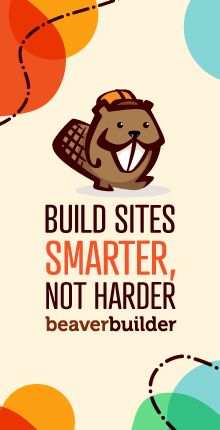
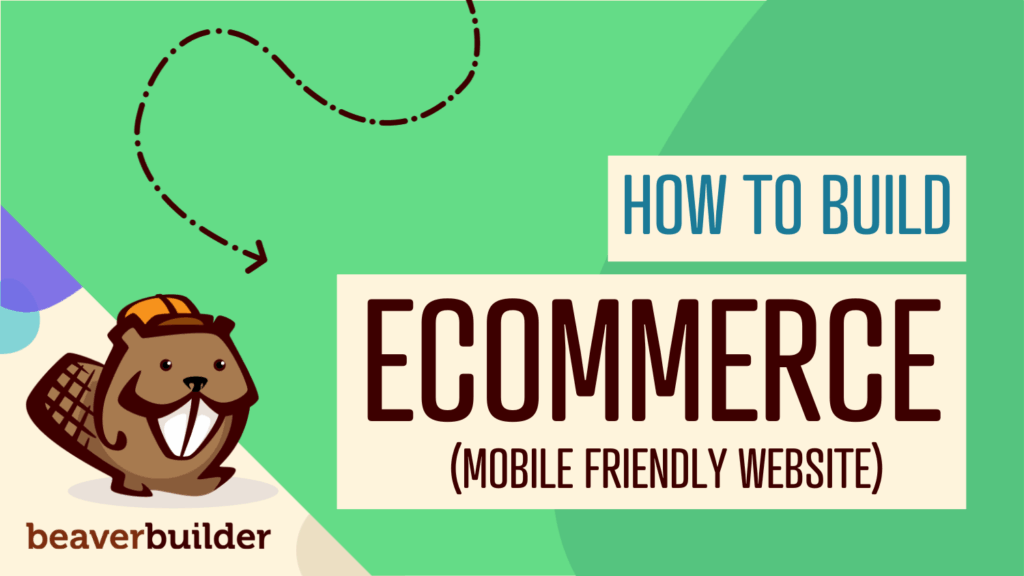
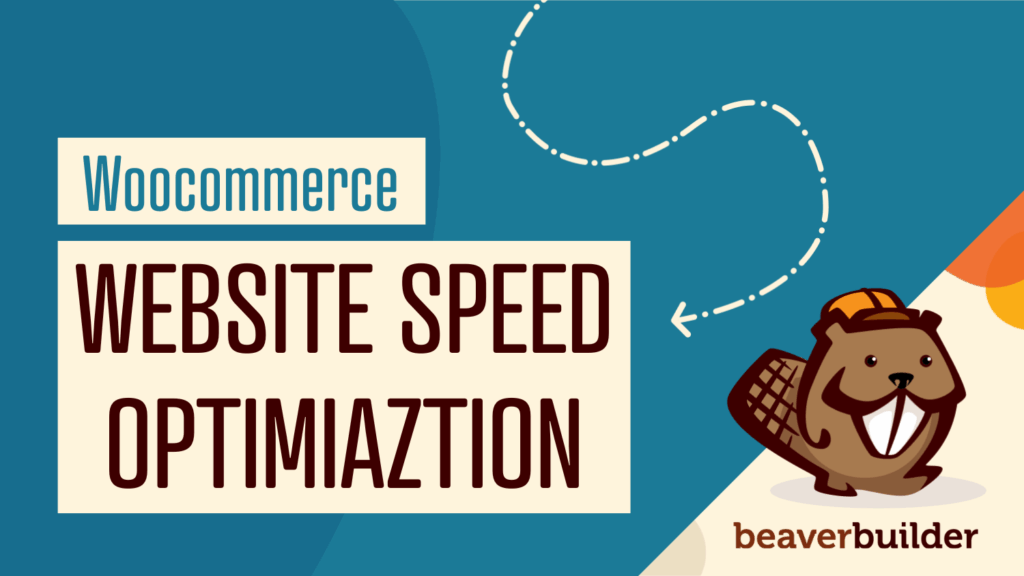
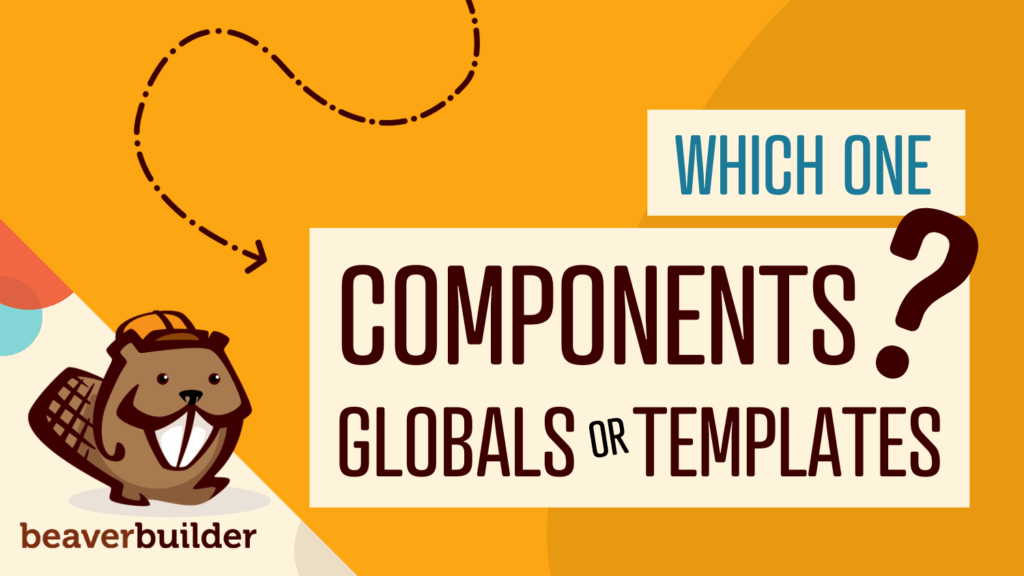
This was a brilliant read, Jennifer! The shift from tech talk to outcome-driven conversations is something every web designer should embrace. Clients don’t want code—they want conversions. I especially loved how you broke down the pricing strategy into business-focused tiers. At Beeka Ads, we’ve seen firsthand how focusing on results over tools builds trust and long-term partnerships. Thank you for these actionable insights!
This is an excellent reminder that selling websites is truly about solving client problems and delivering real value. Focusing on outcomes rather than features not only builds trust but also fosters long-term partnerships. The actionable steps you’ve outlined provide a clear, client-centered approach that anyone in web development or sales can benefit from. Thanks for sharing these valuable insights!
What a great read, most people are clueless when it comes to the backend of a website design. They want an aesthetically pleasing looking website that describes their products/services. Once your client is in on the design, you can then explain the technicality behind the design.
Great article! Selling websites is really about understanding clients’ business goals and showing how the site will help them grow. Focusing on outcomes, using simple language, and sharing real results builds trust and closes deals faster. I’ll definitely use these tips in my next pitch—thanks for the helpful advice!
Great insights, Jennifer! Focusing on client needs and results rather than technical jargon is key. This approach builds trust and makes the conversation more relatable. Thanks for sharing!